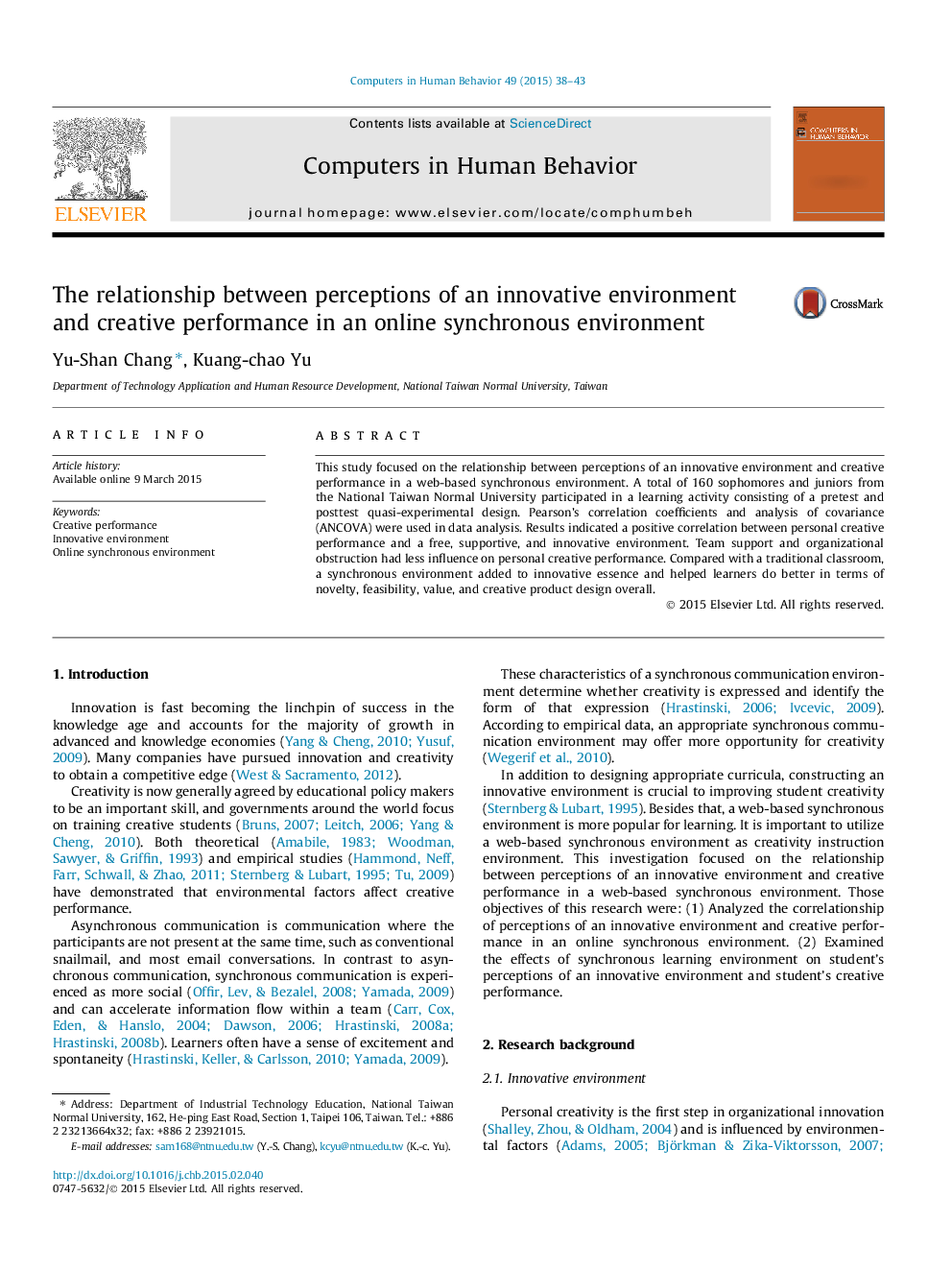| Article ID | Journal | Published Year | Pages | File Type |
|---|---|---|---|---|
| 350300 | Computers in Human Behavior | 2015 | 6 Pages |
•Results indicated a positive correlation between personal creative performance and an innovative environment.•Team support and organizational obstruction had less influence on personal creative performance.•A synchronous environment helped learners do better in terms of novelty, feasibility, value, and creative product design overall.
This study focused on the relationship between perceptions of an innovative environment and creative performance in a web-based synchronous environment. A total of 160 sophomores and juniors from the National Taiwan Normal University participated in a learning activity consisting of a pretest and posttest quasi-experimental design. Pearson’s correlation coefficients and analysis of covariance (ANCOVA) were used in data analysis. Results indicated a positive correlation between personal creative performance and a free, supportive, and innovative environment. Team support and organizational obstruction had less influence on personal creative performance. Compared with a traditional classroom, a synchronous environment added to innovative essence and helped learners do better in terms of novelty, feasibility, value, and creative product design overall.
